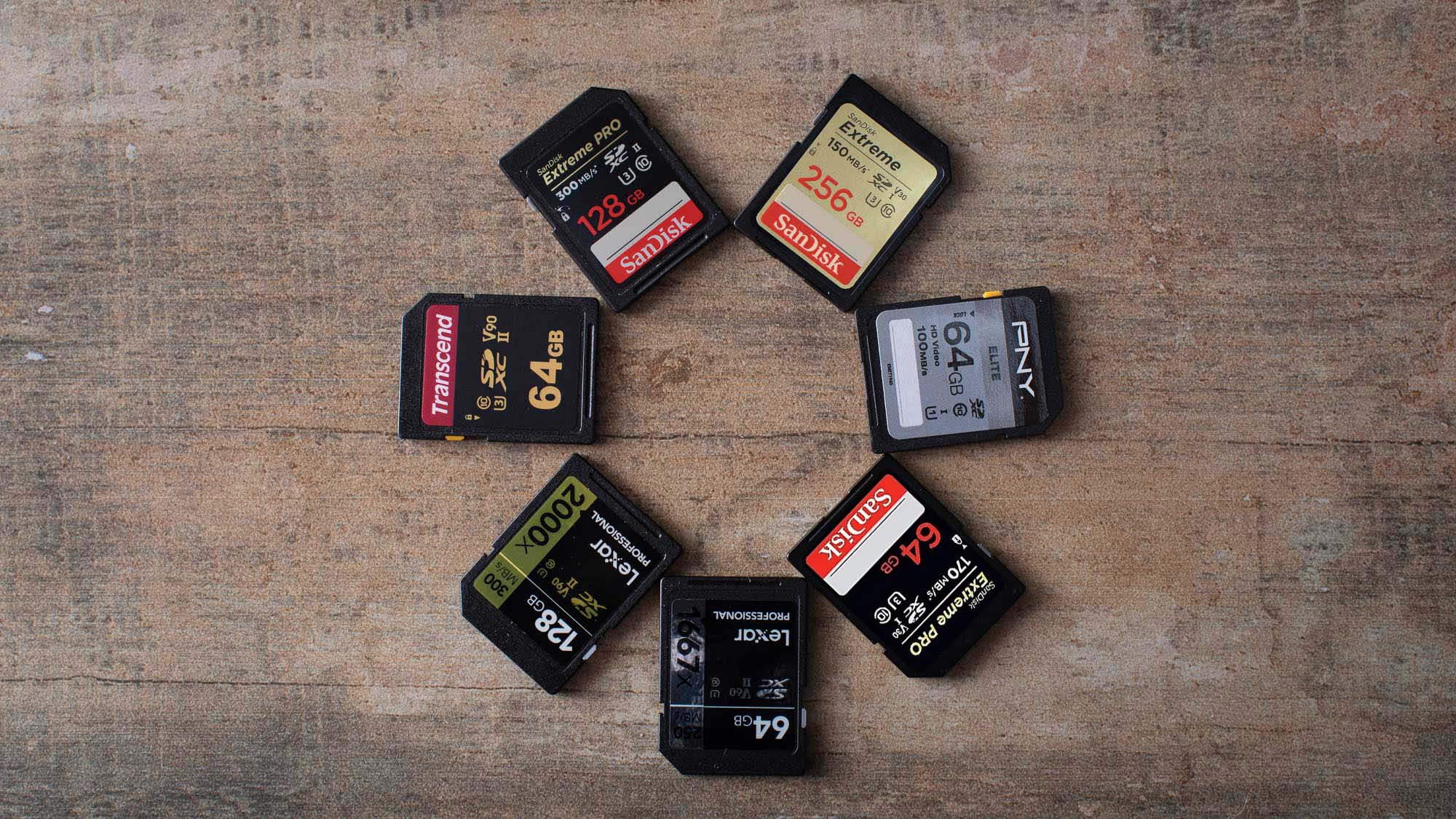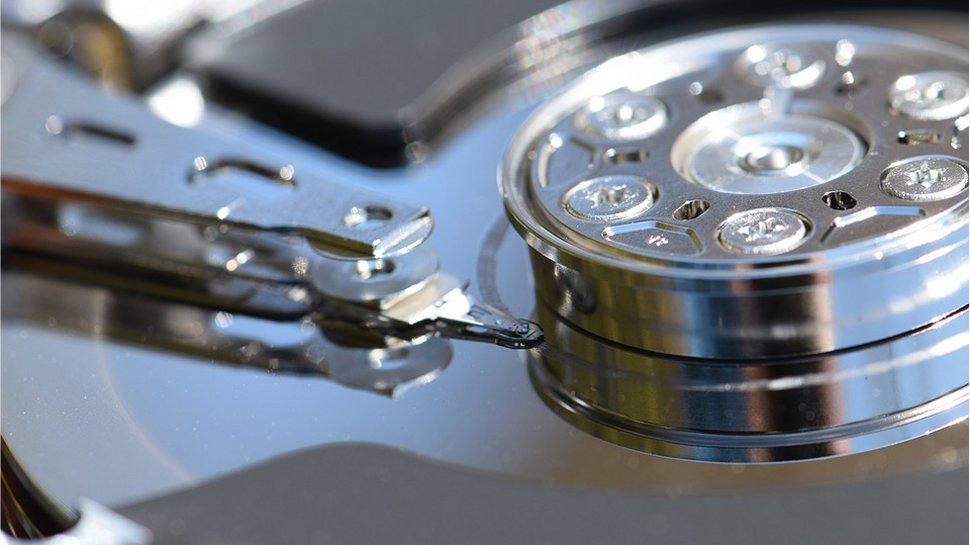Whats the Best Way to Upload Your Dd214 to Usajobs
Best ways to fill-in photos in 2022

Digital photography has many advantages over traditional film, just unfortunately, security isn't really one of them.
Unlike prints or negatives, digital images can exist lost forever in a catastrophic hard drive failure, or fifty-fifty accidentally deleted with a click of the mouse. Even if you use fill-in software (opens in new tab), there is always the chance of that failing.
The hard and fast rule of backups is to have three different storage types: two should exist stored on-site, and could include an external hard drive equally well as storage media in the form of USB sticks or CD/DVD/Blue Ray discs; and the other backup option should be kept offsite, such as a cloud storage (opens in new tab) account.
Hither then are a few ways y'all tin brand sure those digital memories don't vanish before their eyes.

Recordable media such every bit SD cards (opens in new tab), CDs, and DVDs tin can all be a bang-up way to fill-in your photos, but a complication here is that if you're not careful you could terminate upward with a large collection that is difficult to organize.
This can be particularly the case when dealing with SD cards from multiple cameras, or a growing pile of recorded CDs and fifty-fifty DVDs. This not only ways things becoming potentially mixed up, but also lost or damaged.
Therefore while saving to media is fine as a short-term solution, it may not brand for a long-term one when it comes to management and organisation.

2. Employ an external drive
Mention "external difficult drive (opens in new tab)" and most people will immediately think of a standalone SATA harddrive, connected upwardly via USB to your calculator, which you tin can and then copy and write files to. While that's a perfectly fine way to run a set of backups, the caveat is that hard drives can fail (opens in new tab).
Solid State Drives (SSDs) (opens in new tab) are more stable, simply tend to cost more, and while reliability may seem like an initial plus information technology does mean y'all will have to find space for the drive and connecting wires on your computer workspace.
That may non seem like a big problem, but it would seem more ideal to reduce clutter so that backups won't make it your way. Additionally, yous might not want to apply upward your limited number of USB ports with an "always on" external hard drive connectedness.
In that regard, a USB wink drive (opens in new tab) will probably be the simpler solution, as non only does it not require leads connecting upward to your PC, but they tin can exist easily stored away until needed, and taken with yous to other locations as required. Better still, USB wink drives tend to be relatively cheap while offering a large storage space.
In which case, saving to a single chief USB stick tin piece of work well as a backup option for photos in full general. However, the more devices and photos you accept, the more than difficult this can exist to put in place.
Even still, the one reward external hard drives have over recordable media is the bigger and cheaper storage space, with external hard drives at present commonly offering over 1TB of storage or more.

3. Use multiple software libraries
The best offense for any potential disaster is a good defense, and while it'due south brash to use multiple hardware options to backup and store your photos, there are too different software options you lot can use.
Apple used to offer Aperture to assist organize photos, but there are alternatives available such as iPhoto Library Manager (opens in new tab), and the same fob works in iPhoto likewise.
The concept is elementary: Move older, unused, and duplicate images to a split up library stored on an external drive, preferably one that doesn't see daily employ.
This tip works best when libraries are stored on some kind of redundant storage like a Drobo or network-attached storage (NAS) (opens in new tab), or in conjunction with the advice offered in our next method, which too has the benefit of freeing up precious internal space on modern flash storage drives.

four. Relieve photos to the cloud
If you happen to be a person who isn't very proactive most keeping a adept backup of digital photos, syncing them to the cloud is a great way to "set up it and forget it." In that location are an endless multifariousness of services with Mac desktop clients, and many of them offer generous amounts of free or cheap storage likewise.
Some of the more popular options cloud storage options include Dropbox (opens in new tab), Google Drive (opens in new tab), Microsoft OneDrive (opens in new tab), and others, including many offer mobile apps that can be configured to automatically back upwardly the Camera Curlicue of iOS and Android devices.
The same services also work with libraries from desktop applications similar iPhoto, Aperture, or Adobe Lightroom, although you lot'll want to make sure to save these files in a folder on internal or external storage that's set to sync from desktop to cloud for faster local access, rather than a network-based bulldoze dependent upon internet access; Bitcasa offers such an option, and other cloud services can do the same using software similar ExpanDrive (opens in new tab).
We compiled a list of the best cloud photograph storage services.

five. Utilise free cloud photograph services
Speaking of the cloud, mobile shutterbugs are increasingly embracing the convenience of carrying entire photo collections in their pockets using dedicated cloud photograph services.
Picturelife, Adobe Creative Cloud, and ThisLife arrive like shooting fish in a barrel to support photos from any mobile or desktop device, providing an additional layer of security plus the tools necessary to organize and edit photos from anywhere, no matter which device or web browser you happen to be on at the time.
However, there are enough of costless cloud photograph storage options available, which can be peculiarly useful as a 2nd fill-in to follow premium cloud accounts:
Amazon Prime number (opens in new tab) customers receive a number of benefits, not least complimentary commitment, Prime Video, Prime number Music, and book borrowing from the Kindle Prime Library. However, one understated do good of Amazon Prime number membership is the power to shop an unlimited number of photos on your account. Uploading is easy, and once done, so long as y'all remain an Amazon Prime number customer, your photos will remain online and private with your account.
Google Photos (opens in new tab) is another free option for putting your photos in the cloud for free, and without limit. The simply caveat is that Google volition convert loftier resolution images into a slightly lower resolution. If that sounds drastic then don't worry, as for ordinary photos you lot're really not going to notice the departure. You lot can organize photos into albums, and a neat timeline feature means you can scroll through them by engagement.
Facebook (opens in new tab) is another online service where you can upload your photos for gratis, without any apparent limitations. As with other services, you lot can fix them upwards into albums, which is handy equally otherwise, Facebook will but brandish the most recently uploaded in your photo tab. Equally with your Facebook posts, you tin can set sharing permissions, and so that your photos are visible merely to yous, only to named friends and family, or else public for anyone to see.
Demand more options? Nosotros've featured the best free cloud storage.

6. Print them out (merely in case)
Unless your hobby is scrapbooking or you lot grew up in the Fotomat generation (kids, inquire your parents), printing out thousands of digital photos might seem like a waste of money, time, and trees. Just because we're so enamored with paperless photos at present, the time may come when having a closet full of prints might exist preferred or even come up in handy. At the very least, they're a decent hard copy that can exist used to scan back into the computer, should the worst-case scenario transpire and your digital memories get wiped out.
Thankfully, prints are reasonably inexpensive these days. Services like Shutterfly offer unlimited photo storage from desktop or mobile devices (and that counts as another fill-in, score!), and are quite aggressive with weekly deals to make prints, custom books, and other photograph-based products on the cheap. And don't forget your local drugstore — Walgreens, Rite Assistance, CVS, and others offer similar services with the convenience of existence able to pick them up in-store and save a parcel on shipping.
We've provided a listing of what we think are the all-time photo printers.

7. Backup, rinse, repeat
Last but non least, we tin't stress enough the importance of backing up your digital photos (and while we're at it, videos, too). Many consumers don't even bother press their photos anymore since they tin can easily carry entire collections on a smartphone (opens in new tab) or tablet (opens in new tab). These files are effectively your "negatives," and should be treated every bit such — even if that ways offloading a copy onto some form of storage media and shoving it in a shoebox, similar to what generations by did with the existent thing.
Of course, keeping 2 copies of your digital photos in the same location isn't necessarily a good idea, either. A fire, flood, or other natural disaster could wipe out everything you own in a heartbeat, which is where offline storage comes into play. Services like CrashPlan (opens in new tab), Carbonite (opens in new tab), or LiveDrive (opens in new tab) can securely support entire desktop systems (including the digital photos stored at that place) for pennies per day without user interaction.
Now would also exist a great time to invest in a new high-chapters USB 3.0 external hard drive (they're quite cheap these days), and flip on Time Motorcar, the congenital-in backup software that comes standard with Os Ten. Many cheap NAS devices also back up Time Machine, and products from Synology, ASUSTOR, and others can even access files remotely via mobile apps. Just be sure to make a fill-in of your backup every few years in case the original bulldoze decides to meet its maker!
Need help choosing? We've featured the best gratuitous backup software.
Source: https://www.techradar.com/best/best-ways-to-backup-photos
0 Response to "Whats the Best Way to Upload Your Dd214 to Usajobs"
Postar um comentário